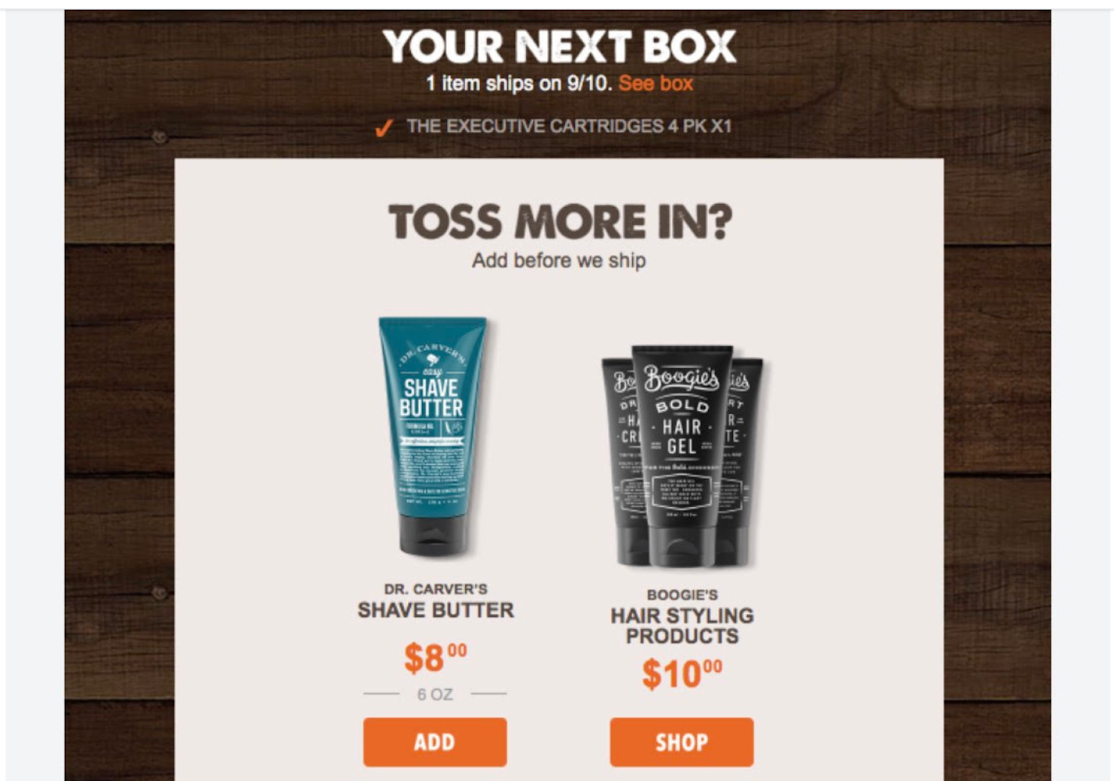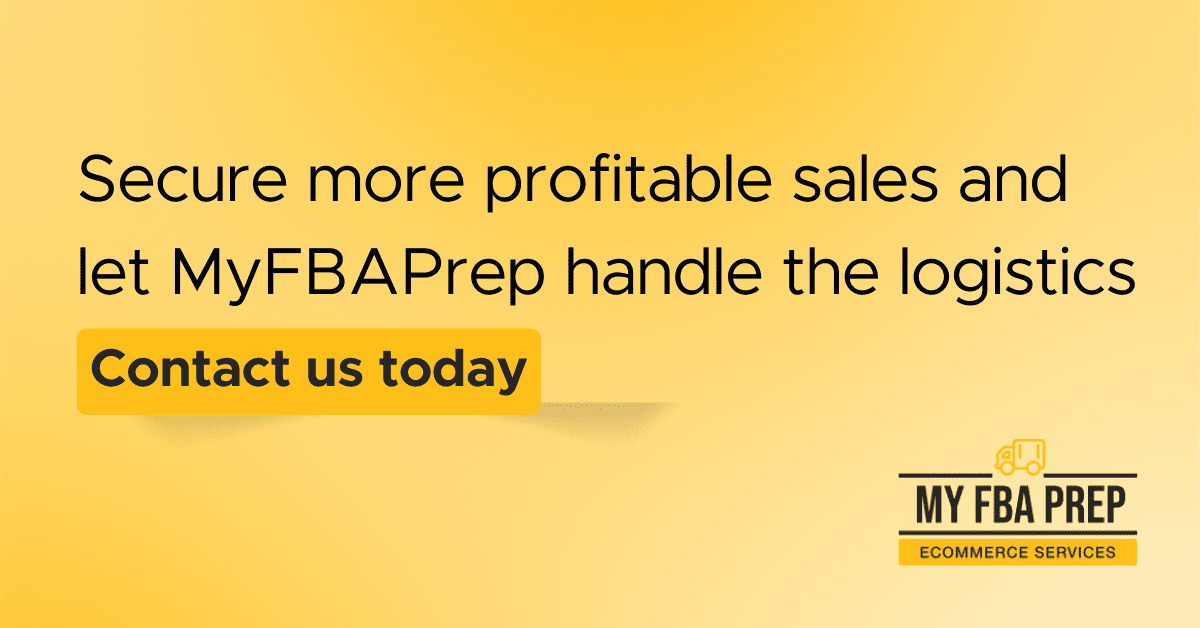
7 Ways to Boost Average Order Value (AOV)

As an eCommerce entrepreneur, you have multiple ways to grow your sales. However, many brands struggle to harvest the most value from each customer who visits their site (without spending an arm and a leg on new advertising and marketing).
If traffic to your website is high and customers are following through on purchases, you might think there’s nothing to improve — after all, products are practically flying off the shelves! But if your customers’ average spend is consistently low, it’s time to up your average order value (AOV). AOV is calculated using the following formula:
AOV = Total Revenue/Total Number of Orders
Your AOV is a useful measurement of your sales success and offers insight into customers’ purchase behavior and buying power. You can then use this information to set new targets and refine your marketing strategy to increase consumers’ average spend.
Two tried and tested marketing techniques to boost AOV are upselling and cross-selling.
Below, we’ll explain the differences between upsells and cross-sells, then run through seven ways you can apply them to your business operations.
What are upsells?
When a brand encourages customers to purchase an add-on feature, higher-quality product, or premium version of their service, that’s upselling.
This might look like shopping for a microwave online, adding it to your cart, then receiving a pop-up asking if you’d be interested in the deluxe edition, which includes an extended warranty for only $50 more.
Usually, an upsell is a direct attempt to convince consumers to buy more expensive versions of products and services. An easy way to remember upsells is to think “upgrade.”
What are cross-sells?
While upsells encourage customers to increase the amount they’re already spending on a given product or service, cross-sells try to push customers towards related products (i.e., getting more products into the cart rather than one higher-priced item).
Let’s use the microwave example again: If you place the microwave in your cart and a pop-up appears with the suggestion, “You might like these items” and shows you images of a toaster and coffee pot of the same make and model as the microwave — that’s cross-selling. Offering a discount if the customer purchases all three? Another cross-sell tactic!
It’s easy to confuse upsells and cross-sells as they’re used in similar ways. You can implement both during the customer’s shopping, checkout, and post-purchase interactions. The key is to use them mindfully, in ways that are helpful to your customers.
Now, let’s dive into specific ways you can increase AOV using cross-sells and upsells.
7 Ways to boost your AOV
1) Deploy product suggestions
When done right, smart product suggestions help consumers find products they like with minimal search effort, which boosts customer retention as a result. If your brand gives off that we get you vibe, customers are more likely to make speedier purchases (less cart lingering or abandonment!) and become repeat shoppers.
For example, if a repeat customer bought the same t-shirt in three colors, it tells you two things: 1. Their preferred t-shirt style, and 2. their preferred colors. So, when you get a similar style t-shirt in stock, you know to push that item as a product suggestion and in which colors to that particular customer.
But how do you figure this out in the first place? And how is an automated suggestion generated? It involves a bit of groundwork.
You’ll need to set up algorithms on your website’s back end, which will analyze behavioral data, track customer preferences, and then use that information to generate the relevant upsell or cross-sell product suggestions. It’s important to implement this feature correctly on your site so you recommend products and services your customers actually want to buy. Alternatively, you can invest in smart product suggestion tools, if that’s within your budget.
2) Make the most of your graphics
These days, storytelling occurs not only in your product description, but also your graphics, product photos, and videos. They all work hand in hand to send the right message (at the right time) about your product. For a higher AOV, leverage your graphics to make subtle suggestions.
For example, if your product is homeware, it would make sense to pair images of a sofa that’s going on sale with a new line of throws and decorative pillows that style well together. This allows you to push a new, higher-end product that could increase your AOV.
This type of cross-sell commonly makes use of product videos. Think of all the clothing stores that show a model walking down the runway wearing a dress you want to purchase, plus shoes and accessories that go well with it. It’s another subtle push and a great way for the customer to observe the full visual effect of the product.
Ultimate takeaway? Strive for functional, eye-catching graphics, images, or videos that showcase your best sellers, trends, or that pair products together logically.
3) Offer free shipping unlocked with AOV
Who doesn’t love free shipping? In fact, having to pay for shipping costs is one of the main reasons customers abandon their shopping carts. For brands, free shipping can incentivize customer spending without slashing the price of your product.
You can increase AOV by offering “unlocked” shipping options where customers need to spend a certain amount before they can access free shipping. If cart abandonment is an issue, sending a notification email promoting free shipping and reminding the customer of what’s in their cart is also an effective tactic.
4) Use email marketing to push additional products
You’ll usually have the opportunity to upsell in your emails immediately after the customer purchase. Send your standard thank-you and confirmation email, but throw in suggestions for additional products or discount offers for items based on their previous purchase history.
We love this email example from Dollar Shave Club, which alerts the customer when their next subscription box will ship and prompts them to add a few extras.
Email upselling can be embedded in your reminder notifications, like at the end of a free subscription, or if users are about to reach a service limit. For instance, this email from Asana flags the customer’s user limit as almost at its maximum and offers them an add-on option.
If your customers are about to hit a milestone, such as reaching a one-year subscription with you or their birthday, that’s your chance to offer product discounts.
Send an email congratulating them on their milestone along with 20%–30% off their next purchase; that’s a start to boosting your customer lifetime value as well.
5) Add a sense of urgency to your messaging
Nothing spurs action quite like the feeling of time slipping away on a good deal. Fueling your customers’ internal “will I buy, won’t I buy” debate with limited time offers and countdowns can be an effective approach to increase average order value.
Airlines consistently do this well (or at least make the panic set in) with their offers like, “Book flights to Italy for less than $400 dollars if you purchase within the next 2 hours!”
Check out the email below, which employs a mixed approach using email for the message delivery and free shipping as the offer, with a dash of urgency to drive the point home.
Overall, it’s a well-balanced combination of a few of the approaches we’ve covered so far.
6) Launch subscription programs
Subscription and refill programs are perfect for customers who love your product and want to avoid adding another errand to their to-do list. And, of course, they’re great for brands because they guarantee a purchase for X number of weeks/months.
Subscriptions work well for products or services that consumers tend to run out of frequently. Food products like coffee, tea, pre-made meal deliveries, and even cat or dog foods thrive with this type of strategy, but it can work for all kinds of ventures.
The main objective here is to make the cost and convenience of a subscription service attractive to the consumer so they’ll sign up for and maintain the subscription.
7) Provide a bundle upgrade when you detect exit intent
Bundles are perfect for customers who experience choice overwhelm or who are nearing site exit. Think clothing stores that showcase a complete look for customers to buy with just one click. Or, consider make-up stores that package everything the consumer needs (but might not be aware they need) to do a full face contour.
Say you sell technical equipment that customers might need for a hobby. You could bundle an online course with all the beginner gear they’ll need at a slightly lower price than if they bought items individually.
Bundling is a quick and easy option for the customer in a hurry, and a helpful choice for those venturing into new territory.
Wrapping up – Vary your strategy to boost average order value
Ultimately, the best way to increase your average order value is to pay close attention to your buyers’ behavior, regularly track your AOV, and use a combination of the seven strategies outlined in this article.
Remember, the most effective upsells and cross-sells are those naturally integrated into the customer experience. Buyers want to hear about products that appeal to their interests and offers that appear at the right time.





